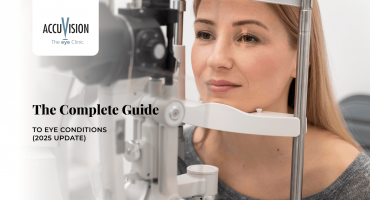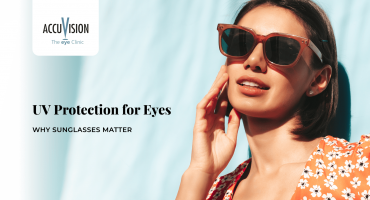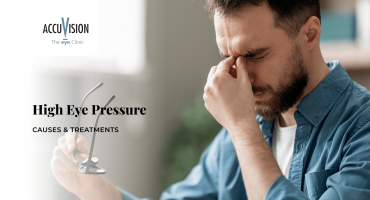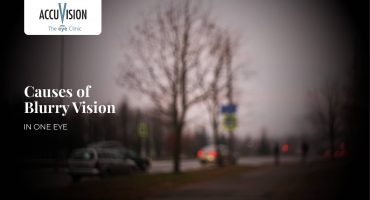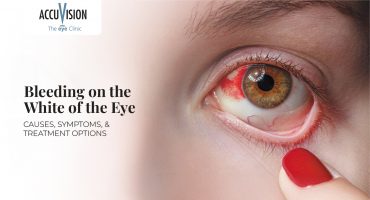- RevitalVision: A Computer-Based Treatment for Amblyopia
- Traditional Amblyopia Treatments
- RevitalVision vs. Traditional Treatments
- Conclusion
- FAQs
- References
RevitalVision vs. Traditional Amblyopia Treatments: What’s the Difference?

Amblyopia, commonly known as lazy eye, affects approximately 1.36% of children worldwide, according to a comprehensive meta-analysis. This neurodevelopmental condition occurs when one eye fails to achieve normal visual acuity, often due to abnormal visual experience during early development.
The importance of timely and effective amblyopia treatment cannot be overstated. Left untreated, amblyopia can result in permanent visual impairment, reduced depth perception, and increased risk of vision loss later in life. These consequences significantly impact quality of life, educational achievement, and career prospects.
Beyond cases where a muscle weakness (strabismus) requires surgical correction, traditional approaches such as patching and atropine penalization in childhood have been the mainstay of amblyopia treatment for decades. However, these methods face significant limitations, particularly regarding patient compliance and effectiveness in older children and adults. Enter RevitalVision amblyopia therapy, a breakthrough computer-based treatment that challenges conventional wisdom about the “critical period” for vision development.
This raises a fundamental question for patients and clinicians alike: How does RevitalVision treatment for lazy eye differ from amblyopia traditional treatment, and what does the evidence tell us about their comparative effectiveness?
RevitalVision: A Computer-Based Treatment for Amblyopia
What is RevitalVision?
RevitalVision amblyopia therapy represents a paradigm shift in vision treatment. This FDA-cleared, computer-based treatment for amblyopia utilises cutting-edge neuroscience to address the root cause of visual impairment at the brain level, rather than focusing solely on the eyes themselves.
This treatment is delivered through our Neurovision programme, which is based on the RevitalVision platform. Patients complete structured computer-based visual tasks at home, under clinical supervision, to stimulate the brain’s visual cortex and improve visual function.
Unlike traditional methods that primarily target eye muscle usage and ocular dominance, RevitalVision treatment for lazy eye harnesses the brain’s neuroplasticity (its ability to reorganise and form new neural connections throughout life). This evidence-driven approach has opened new possibilities for treating amblyopia beyond the traditionally accepted “critical period” of childhood development.
How It Works
RevitalVision employs sophisticated perceptual learning techniques using Gabor patches, a specialised visual stimulus that specifically targets and stimulates neurons in the brain’s visual cortex. These precise patterns, based on the groundbreaking work of Nobel Prize-winning scientist Dennis Gabor, activate specific neural pathways responsible for visual processing.
The treatment works by training the brain’s visual processing system rather than attempting to strengthen eye muscles. Through repeated exposure to carefully calibrated visual stimuli, the therapy improves contrast sensitivity and visual acuity by enhancing the brain’s ability to interpret visual information. This neuroplasticity-based approach addresses the fundamental neural deficits underlying amblyopia.
Clinical Evidence
The scientific foundation supporting RevitalVision is robust and growing. Clinical studies have demonstrated significant improvements in visual outcomes for both paediatric and adult patients. Research shows that patients typically achieve an average improvement of 2 lines on standard visual acuity charts, with contrast sensitivity improvements of up to 100%. In patients where there has been some attempt at treatment in childhood even if inconsistent, or amblyopia caused by uncorrected high prescriptions, we find the improvement in lines can be even more.
Importantly, recent evidence highlights that adults, once considered beyond the “critical period” for treatment, can also benefit. A study demonstrated that adult amblyopes achieved meaningful improvements in both visual acuity and contrast sensitivity, and these gains were sustained at 12-month follow-up.
Long-term follow-up studies spanning 1-2 years demonstrate that the improvement gained with RevitalVision remains stable, with amblyopic patients demonstrating additional spontaneous improvement in contrast sensitivity and stereo vision after completing the program.
Benefits of RevitalVision
RevitalVision offers several significant advantages as follows:
- Superior Compliance: The home-based, interactive nature of the treatment addresses one of the most significant challenges in amblyopia management. Unlike patching, which children often resist, the computer-based format engages patients and can be easily integrated into daily routines.
- Age-Independent Effectiveness: Traditional treatments show diminishing returns with age, but RevitalVision has demonstrated efficacy across all age groups, including adults who were previously considered untreatable.
- Neuroplasticity-Based Improvements: Rather than simply forcing the use of the weaker eye, RevitalVision creates lasting neural changes that improve visual processing at the cortical level.
- Non-Invasive Approach: The treatment usually requires no drugs or medical procedures, making it feel like a more accessible solution.
Traditional Amblyopia Treatments
Glasses & Patching
Occlusion therapy, commonly known as patching, remains a gold standard for traditional treatment of amblyopia. This method involves covering the stronger eye with an adhesive patch for several hours daily, forcing the brain to rely on the amblyopic eye and theoretically strengthening the neural pathways associated with that eye.
Research from the Amblyopia Treatment Studies (ATS) has shown that patching can be effective, particularly in younger children. Studies demonstrate that children treated with patching show significant improvement in amblyopic eye visual acuity, with success rates varying based on age and severity of amblyopia
Atropine Eye Drops
Atropine penalisation offers an alternative to patching by temporarily blurring vision in the stronger eye through pupil dilation and cycloplegia. This pharmacological approach forces reliance on the amblyopic eye without the social stigma associated with patching.
Clinical trials comparing atropine to patching have shown comparable effectiveness. Both patching and atropine therapy have been shown to improve visual acuity in children, with some studies suggesting that while recovery may be faster with patching, the two modalities appear equally effective.
Conventional Vision Therapy
Amblyopia vision therapy encompasses various eye exercises and visual activities designed to improve eye coordination, focusing abilities, and visual processing skills. These approaches typically involve in-office sessions with an optometrist or vision therapist, supplemented by home exercises.
However, traditional vision therapy faces significant limitations and may not be applicable for all forms of amblyopia. The effectiveness tends to diminish with age, and compliance can be challenging due to the time-intensive nature of the treatment. Additionally, the evidence base for conventional vision therapy in amblyopia treatment remains limited compared to patching and atropine.
Limitations of Traditional Approaches
Several significant limitations characterize traditional amblyopia treatments:
- Compliance Issues: Studies consistently demonstrate that a majority of patients receive significantly less treatment than prescribed when using traditional methods. Poor adherence represents one of the most significant barriers to successful treatment outcomes.
- Age-Related Effectiveness Decline: Traditional treatments have shown reduced efficacy as patients age beyond the supposed “critical period” of visual development, typically considered to end around age 7-8 years.
- Risk of Regression: Without continued intervention, improvements achieved through traditional methods may regress when treatment is discontinued.
- Psychosocial Impact: Patching can cause significant psychological distress, particularly in school-age children, leading to reduced self-esteem and social difficulties.
- Limited Adult Options: Until recently, adults with amblyopia had virtually no treatment options, as traditional methods were considered ineffective beyond childhood.
RevitalVision vs. Traditional Treatments
| Aspect | RevitalVision Amblyopia Therapy | Traditional Amblyopia Treatment |
|---|---|---|
| Target | Brain’s visual cortex (neuroplasticity) | Eye muscle usage and ocular dominance |
| Age Range | Children and adults (9+ years) | Most effective in children (8 years) |
| Compliance | High: at-home, engaging, computer-based | Often poor: patching frequently resisted |
| Treatment Duration | Approximately 30 minutes/session, usually 3 times/week, with a total of 30 to 50 sessions. | Months to years, several hours daily |
| Evidence-Base | FDA-cleared, multiple clinical studies | Extensive historical data, gold standard |
| Long-term Benefits | Durable neural changes, lasting gains | Possible relapse after stopping treatment |
| Mechanism | Perceptual learning, cortical stimulation | Occlusion therapy, pharmacological penalisation |
| Side Effects | Minimal – temporary eye strain possible | Skin irritation (patching), light sensitivity (atropine) |
| Cost Considerations | Higher upfront cost, shorter duration | Lower immediate cost, more extended treatment period |
| Accessibility | Home-based, requires computer access | Clinic-based for atropine, patches are widely available |
The comparison reveals fundamental differences in approach and outcomes. While traditional methods have a longer track record and broader availability, RevitalVision offers advantages in compliance, adult effectiveness, and neuroplasticity-based improvements
Clinical evidence suggests that traditional patching regimens are probably more effective than atropine in many cases, but both conventional approaches face significant limitations that RevitalVision appears to address effectively.
Conclusion
The landscape of amblyopia treatment is evolving, with computer-based amblyopia vision therapy like RevitalVision offering new hope for patients previously considered untreatable. While traditional amblyopia therapy remains valuable for many patients, particularly young children, RevitalVision represents a modern, brain-based alternative addressing many limitations of conventional approaches.
Evidence supports RevitalVision’s effectiveness across age groups, with greater compliance rates and lasting neuroplastic changes. However, treatment choice should be individualised based on patient age, severity of amblyopia, and personal preferences.
Professional evaluation remains essential to determine the most appropriate treatment approach for each case. Early detection and prompt treatment are key to optimal outcomes, regardless of the method chosen
Ready to explore cutting-edge amblyopia treatment options? Book a consultation with AccuVision UK today to discover whether computer-based amblyopia vision therapy could be right for you or your child.
FAQs
1. What is RevitalVision amblyopia therapy?
RevitalVision is a computer-based treatment for amblyopia (lazy eye) that uses neuroscience and perceptual learning to retrain the brain’s visual cortex. Unlike patching or eye drops, it focuses on improving neural processing rather than forcing eye usage.
2. How does RevitalVision treatment for lazy eyes differ from traditional methods?
Traditional amblyopia treatments like patching and atropine mainly target the eyes, with limited success in older patients. RevitalVision works at the brain level, harnessing neuroplasticity, and has shown effectiveness in both children and adults
3. Can adults benefit from computer-based treatment for amblyopia?
Yes. Clinical studies show that RevitalVision improves visual acuity and contrast sensitivity in adults, even though traditional treatments are generally less effective after childhood.
4. Is amblyopia vision therapy with RevitalVision more effective than patching?
While patching remains effective in young children, RevitalVision often provides options through adulthood and long term results.
5. How many sessions are needed for RevitalVision amblyopia treatment?
Most patients complete 40–80 sessions, typically 30 minutes each, performed at home around 3 times a week. Results are often sustained for years due to lasting neural changes.
References
Hu, B., Liu, Z., Zhao, J., Zeng, L., Hao, G., Shui, D. and Mao, K., 2022. The global prevalence of amblyopia in children: A systematic review and meta-analysis. Frontiers in Pediatrics, 10, p.819998. Available at: https://pmc.ncbi.nlm.nih.gov/articles/PMC9114436/
Chen, A.M. and Cotter, S.A., 2016. The Amblyopia Treatment Studies: Implications for Clinical Practice. Advances in Ophthalmology and Optometry, 1(1), pp.287–305. Available at: https://pmc.ncbi.nlm.nih.gov/articles/PMC5396957/
Polat, U., Ma-Naim, T., Belkin, M. & Sagi, D., 2004. Improving vision in adult amblyopia by perceptual learning. Proceedings of the National Academy of Sciences of the United States of America, 101(17), pp.6692–6697. doi:10.1073/pnas.0401200101.



